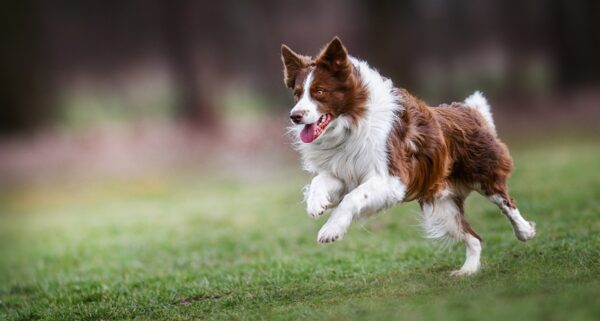Life with a dog can be full of surprises, both for you and your furry friend. From unplanned trips to the vet to unexpected travel opportunities, preparing your dog to handle new and potentially stressful situations is an essential part of being a responsible pet owner. Training techniques like desensitization can help dogs stay calm and confident in challenging scenarios, setting them up for success. Marissa Corbett of Shamong New Jersey emphasizes that desensitization is not about forcing a dog into a situation but gradually introducing them to it in a controlled, positive manner.
Understanding the Importance of Desensitization
Desensitization is a gradual process that helps dogs adapt to things they might initially find stressful or frightening. Whether it’s the sound of clippers at the groomer, the smell of antiseptics at the vet, or the rumble of a car engine, these stimuli can overwhelm an unprepared dog. Training your dog to handle such situations calmly not only ensures their comfort but also makes these events safer and more manageable for everyone involved.
At its core, desensitization builds trust between you and your dog. It shows your pet that you’re a source of safety and reassurance, even when the environment feels unfamiliar or intimidating. This trust is critical for navigating the unexpected moments of life, where your dog’s ability to remain calm can make all the difference.
Preparing for Vet Visits
Veterinary visits are a crucial aspect of a dog’s life, but they can also be one of the most anxiety-inducing experiences. To desensitize your dog to the vet, start by familiarizing them with the clinic environment. Take your dog for brief visits to the clinic without any procedures being performed. Let them sniff around the waiting area and interact positively with the staff. Pair these visits with treats and praise to create a positive association.
At home, practice handling your dog in ways they might experience during a check-up. Touch their paws, ears, and mouth gently to get them used to being examined. Gradually increase the time you spend handling them, always rewarding calm behavior. Over time, your dog will learn to associate these interactions with positive outcomes, reducing their anxiety when they visit the vet.
Grooming Without the Drama
For many dogs, grooming can be a daunting experience. The sound of clippers, the feel of brushes, and the sensation of water during a bath can all be overwhelming. Desensitization to grooming starts with introducing your dog to the tools and sensations in a non-threatening way.
Begin by letting your dog explore grooming tools like brushes, nail clippers, or even the hairdryer when it’s turned off. Reward them with treats for remaining calm. Gradually introduce the sounds and movements associated with grooming. For example, turn on the hairdryer from a distance or gently touch their paws with nail clippers without actually trimming their nails. These small, consistent steps can build your dog’s confidence and reduce their fear.
Bath time can also be made less stressful through desensitization. Start by introducing your dog to the bath area without running water. Encourage them to step into the tub or onto the grooming table with plenty of praise and rewards. Gradually add the sound and feel of water, always ensuring the experience remains positive and manageable for your dog.
Travel Training for Peaceful Adventures
Whether it’s a road trip, a flight, or a quick car ride to the park, travel can be an exciting yet stressful experience for dogs. Preparing your dog for travel involves desensitizing them to the modes of transportation they’ll encounter.
For car travel, begin by letting your dog explore the car while it’s stationary. Allow them to hop in and out, sniff the seats, and get comfortable with the space. Reward calm behavior with treats and verbal praise. Once they’re comfortable, start with short drives around the block, gradually increasing the distance as they become more confident.
If air travel is in your dog’s future, desensitization becomes even more critical. Introduce your dog to their travel crate well in advance, making it a cozy and inviting space.
Practice placing them in the crate for short periods and gradually extend the time. Expose them to airport-like sounds and experiences, such as crowds and luggage carts, to help them acclimate to the environment.
Consistency and Patience Are Key
Desensitization is not an overnight process. It requires consistency, patience, and a keen understanding of your dog’s comfort levels. Pushing a dog too quickly or forcing them into situations they’re not ready for can backfire, reinforcing fear rather than alleviating it. Always move at your dog’s pace, rewarding progress and celebrating even the smallest victories.
It’s also essential to remember that each dog is unique. Some may adapt quickly to new experiences, while others may need more time and encouragement. Pay close attention to your dog’s body language and responses, adjusting your approach as needed. With the right balance of exposure, positive reinforcement, and patience, you can help your dog face life’s surprises with confidence.
Building a Lifelong Bond
Training your dog to handle vet visits, grooming sessions, and travel isn’t just about convenience—it’s about strengthening the bond between you and your pet. By investing time in desensitization, you’re showing your dog that you’re their partner in navigating the world, no matter what challenges arise.
When dogs trust their owners to guide them through unfamiliar situations, their confidence grows. This trust can transform daunting experiences into opportunities for connection and growth. In the end, the effort you put into preparing your dog for life’s surprises pays off in a happier, healthier, and more secure companion who’s ready to tackle the unexpected by your side.
